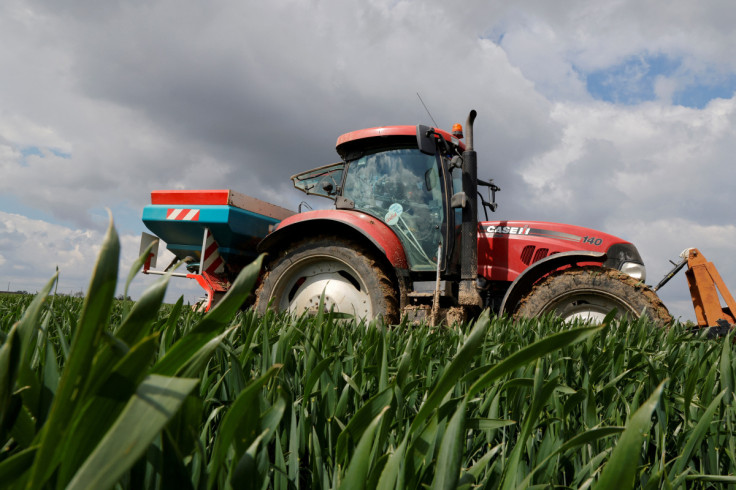What Moving Away From Food-Based Fuels Looks Like
The energy industry has long used plant-based sources like grain, maize and soybeans as a source, or feedstock, to create renewable fuels, particularly for the transportation sector. But with the war in Ukraine continuing to exacerbate concerns around sustainable fuel sources, many are questioning the world's reliance on plant-based fuels, particularly as it pertains to limited grain supply that could be used for food.
According to a report from European-based environmental group, RePlane, in 2020, the EU used approximately 3.3 million tons of wheat as a feedstock to create biofuels, along with 6.5 million tons of maize. Overall, 20% of Ukraine's wheat exports and 27 of its maize exports are being used for transportation fuel, when the continent could be using the products for fuel. And even without taking food crises into account, farmers would struggle to keep up with crop production to meet fuel demands regardless. For example, Rabobank predicts that in the U.S. in order to produce enough soybeans to meet the country's fuel needs, analysts predict soybean production would have to grow by roughly 3.6 billion bushels by 2030 to meet energy providers' needs. The cost of animal fats, vegetable oils and used grease (often referred to as FOG) used to make renewable diesel also increased following Russia's invasion of Ukraine and soybean oil 40% year-over-year. Further, in order to produce these fuels, the industry must account for emissions associated with farm equipment, farming and shipping.
Making renewable fuels from FOG requires a relatively low capital cost for the conversion equipment but cost of the fats, oils and greases themselves is relatively high compared to the other feedstock sources. Recent concern about using food sources to make fuels has shined a spotlight on a growing problem. In reality, there is not enough FOG available to meet the world's transportation fuels needs. The industry has no choice but to move towards other alternative feedstocks for sustainable fuels. The trend has already started, and the new pressure on using food as fuel will likely accelerate it.
There are four known non-food feedstocks available for the production of renewable transportation fuels: biomass, like wood or crops; municipal solid waste (MSW); biogas from landfills, wastewater treatment facilities and anaerobic digesters; and CO2 which can currently only be utilized by either capturing the CO2 emitted during the combustion of various organic materials or via Direct Air Capture (DAC) technology, which literally pulls the CO2 from the atmosphere.
Each of these fuel sources come with their own advantages and disadvantages. The capital cost for the conversion of the solid feedstocks like wood is much higher than for FOG plants, but these feedstocks are usually much cheaper. In the case of MSW (Municipal Solid Waste), the waste itself may be free, or in some cases the city or county will pay the plant owner to take the MSW rather than pay to have it buried in a landfill. The fuels from these plants are much better in reducing GHG than the FOG fuels. These plants tend to be much smaller than FOG plants, partly due to the cost of moving the solid feedstocks to the plant. The main downside is, that to date, most of the plants being built or under development produce less than 6,000 barrels of fuel per day (BPD).
Biogas is an increasingly appealing alternative feedstock for creating renewable fuels with minimal carbon emissions. The advantages of biogas are that it is much easier to convert into fuels and requires little front-end equipment, resulting in lower capital spend for a higher yield of fuel, plus the potential for zero accompanying emissions. The American Biogas Council estimates more than 3 billion cubic feet of biogas could be produced each day in the United States, enough to make over 300,000 BPD of renewable fuels. However, although abundant, biogas does not tend to be available in large quantiles in one location making it difficult to justify creating the large plants typically used for conversion on site. Given the quantity of feedstock available, the industry needs to look to modular plants that can be remotely operated and mass produced. Yet even with these smaller plants lessening the production cost, biogas resources worldwide are still not enough to meet the growing demand.
Finally, CO2 (plus water) is theoretically the only feedstock with no practical limits, but the capital cost and the need for huge a amount of renewable electricity needed to drive the process makes this conversion daunting. In short, the capital cost for these plants are among the highest of all the options. With currently available technology, these e-fuels or PtL (Power to Liquids) plants need 15-20 MW of power for every 100 BPD of fuels produced.
Only time will tell how the renewable transportation fuels industry will evolve. Right now, the industry is looking for technological breakthroughs aimed at lowering the cost of fuel production while being mindful of minimizing carbon emissions. In the short term, all of the above feedstocks will play a role in the energy transition, but the industry is eagerly awaiting to see which approach will take the lead.
(Mark Agee is the vice president of Emerging Fuels Technology.)

© Copyright IBTimes 2024. All rights reserved.





















